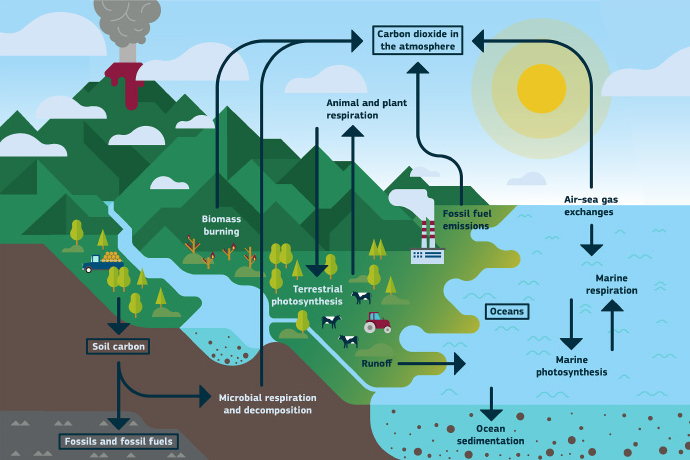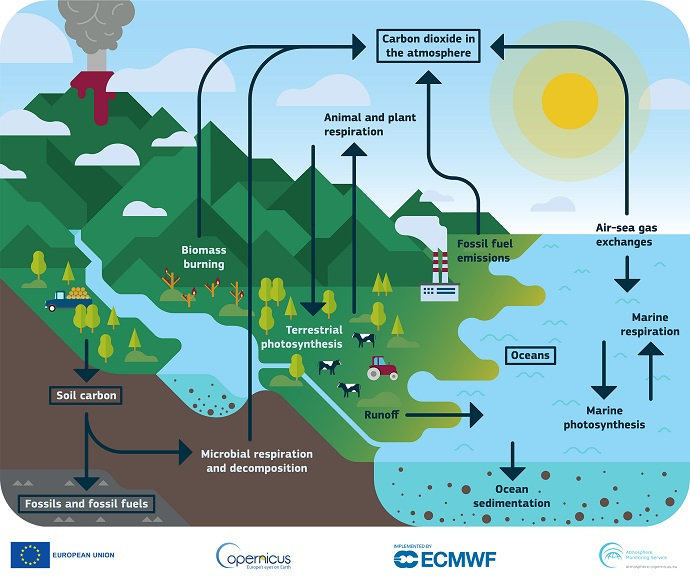

Image: CAMS/ECMWF
The EU-funded Copernicus Atmosphere Monitoring Service (CAMS), implemented by ECMWF, is working to support the new Global Greenhouse Gas Watch (G3W) of the World Meteorological Organization (WMO).
To this end, it will host a G3W meeting from 19 to 22 September 2023 in Bonn, Germany, that brings together key global players in the field of monitoring the level of greenhouse gases in the atmosphere.
“CAMS is an active player in this field as it monitors and forecasts global levels of carbon dioxide (CO2), methane (CH4) and nitrous oxide (N2O) concentrations as well as net fluxes of those gases into the atmosphere,” says the Director of CAMS, Vincent-Henri Peuch. “So we’ll have a role to play in the WMO initiative.”
CAMS is going further by developing a capacity to monitor and verify anthropogenic greenhouse gas emissions in a consistent and reliable manner, but this is not part of the G3W initiative.
The WMO governing body, the World Meteorological Congress, approved the G3W initiative in May. It noted the “urgent need to strengthen the scientific underpinning of mitigation actions taken by the Parties to the United Nations Framework Convention on Climate Change (UNFCCC) and the Paris Agreement”.
“This is a very important initiative as we are starting to see a movement towards taking observation-based decisions at a global level,” Vincent-Henri says.
Focus of the Bonn meeting
The purpose of the meeting in Bonn is to bring different organisations involved in monitoring greenhouse gases together and to develop common standards for exchanging data and comparing products.
“We want to make sure that countries that want to use these information products for their reporting receive all the support they need to navigate them,” Vincent-Henri explains.
To that end, data from different organisations, such as ECMWF/CAMS, the US National Oceanic and Atmospheric Administration (NOAA) and NASA, the Japan Aerospace Exploration Agency (JAXA), and the Chinese Meteorological Administration will have to be made comparable.
Another WMO workshop will take place from 3 to 5 October in Geneva, Switzerland. It will focus on observations to be used in G3W. By the end of the year, a G3W implementation plan is to be ready.
“The immediate aim is to make sure the outputs of different organisations are interoperable and their evaluation is harmonised, but we could go as far as combining products on greenhouse gases globally,” Vincent-Henri says.

CAMS has developed tools to monitor and forecast global levels of greenhouse gas concentrations as well as their net fluxes into the atmosphere. Credit: CAMS/ECMWF
How G3W came about
G3W was developed by the WMO to make the outputs of a number of organisations that monitor and predict levels of greenhouse gases comparable and usable globally.
Vincent-Henri and CAMS Deputy Director Richard Engelen contributed with many other international experts to a concept note in early 2023 that supported the WMO secretariat’s proposal for the initiative.
“G3W is a kind of top layer where products from different organisations can be shared and compared,” Vincent-Henri explains. “After a lot of preparation, much of which was online, we will have two physical meetings in Bonn and Geneva to work on the implementation plan of G3W.”
